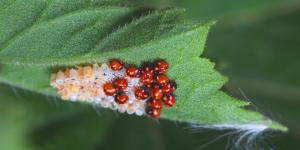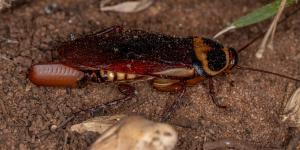How Do Seals Reproduce?


Seals are semi-aquatic mammals, spending some of their time on land and some of their time in the water. They spend time in each environment for different reasons, all related to necessary elements of their survival. This includes both the individual and their species. Seal reproduction is one of the most important. Without it, there would be no further seal generations. It is a multi-stage process, beginning with complex mating rituals and ending in the birth of seal pups. All of their actions are afforded by specific evolutionary adaptations, something particularly important for their often inhospitable environment.
You can learn more about these processes and stages of seal mating and reproduction as AnimalWised asks how do seals reproduce? In addition to the behaviors involved, we look at details of their breeding season and any other relevant information.
How do seals reproduce?
Reproduction in animals can vary greatly according to species, with some animals even able to reproduce in more than one way. These methods of reproduction are one of the ways in which animals are classified. As placental mammals, seals reproduce viviparously. As with all viviparous animals, the pups develop entirely within the maternal uterus.
For seal pups to develop in utero, active gestation is required whereby the embryo is nourished through a highly specialized placental system. The seal placenta features unique adaptations to maintain fetal development in a marine environment. These include efficient mechanisms for nutrient and oxygen exchange even during the mother's deep dives.
Unlike most terrestrial mammals, many seal species have developed a system of delayed implantation of the fertilized egg. This fascinating adaptations means that the egg is fertilized during copulation, but it can then remain dormant before implanting on the uterine lining for some time. The reason for this dormancy is so that the seal can postpone active development until it synchronizes the birth with the most favorable environmental conditions.
Do seals hatch from eggs?
Contrary to what some people might think when observing their aquatic lifestyle, seals do not lay eggs. This confusion may arise when superficially comparing them with other marine animals such as turtles. Some may also wonder if they lay eggs like another semi-aquatic mammal, the platypus. The platypus is a monotreme, the only mammal species that lay eggs. Seals are not monotreme, but pinnipeds.
Embryonic development in seals occurs entirely within the female reproductive system. A complete placental connection allows for the exchange of nutrients, oxygen and waste products between mother and fetus. This process ensures that the offspring are born fully formed, making them precocial animals. Although they still rely on their mother for survival, they are ready for the harsh conditions of their marine environment once born.
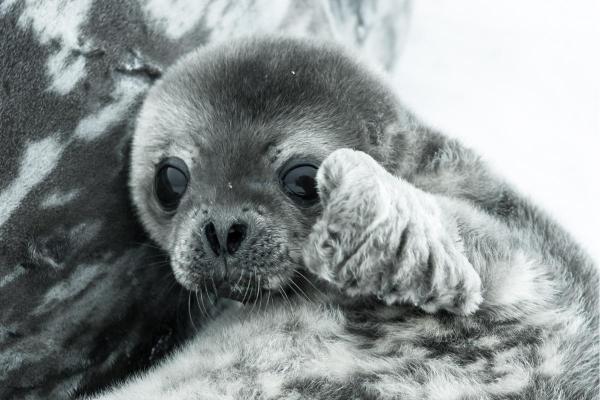
When is the seal breeding season?
While all types of seal are placental mammals, not all species are the same when it comes to breeding behaviors. For example, some are polygynous and some are monogamous. This means they can have multiple breeding partners or a single breeding partner at one time, respectively.
The time of year during which they are more likely to breed can also differ. The reproductive cycle of seals is extraordinarily synchronized with weather patterns and food availability in their respective habitats. Here are some striking examples:
- Polar seal species: such as the harp seal (Pagophilus groenlandicus). These seals time their births to coincide with the spring thaw, when ice shelves still provide protection and conditions are less extreme. For this species, births occur en masse between late February and March, creating spectacular gatherings of thousands of females giving birth simultaneously on the ice.
- Temperate seal species: such as the harbor seal (Phoca vitulina). They exhibit different reproductive patterns. These seals typically give birth during the northern summer, between June and August. This is when conditions on the rocky beaches where they give birth are more stable and food is more available. This seasonal synchronization is not accidental, but the result of millions of years of evolution that have perfected the optimal timing to maximize the chances of seal pup survival.
- Elephant seals (Mirounga spp.): types of large seal species that exhibit one of the most extreme reproductive synchronization systems. These marine giants gather on specific beaches between December and January, where the females give birth almost simultaneously. This behavior creates a true population explosion at the breeding colonies, with thousands of pups born in a very concentrated period.
There is some confusion over which pinniped animals are considered seals, especially due to their common names. AnimalWised helps to clarify this subject with our article on the difference between seals, sea lions and walruses.
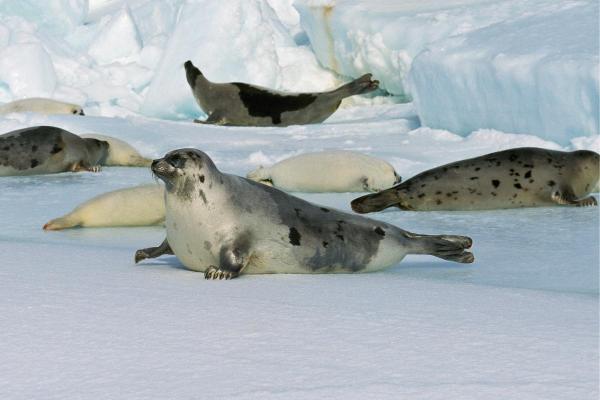
How do seals mate?
Now we know the type of seal reproduction these semi-aquatic mammals carry out and when it occurs, we take a closer look at seal mating behaviors. As with breeding season, seal mating behavior is also varied between species. We have already stated that some seals are polygamous and some are monogamous, but even within these types of mating behaviors variations exist. Seal mating includes:
- Territorial polygyny: elephant seals represent some of the the most extreme example of territorial polygyny whereby dominant males aggressively establish and defend territories that can include harems of up to 50 females. These fights for dominance are spectacular, with males weighing over 3 tons engaging in battles that leave deep scars.
- Lek polygyny: lek mating is a distinct form of polygyny where males gather in the same space to compete for specific mating females, known as leks. An example of a seal that carries out this mating behavior is the gray seal (Halichoerus grypus). These include displays of complex underwater vocalizations and spectacular synchronized swimming performances. Much of the courtship and copulation of gray seals takes place in the water, unlike elephant seals which mate primarily on land.
- Monogamy: some seals are relatively monogamous to one mating partner at a time. Unlike in lek mating, female seals in species such as the walrus (Odobenus rosmarus) and phocids like the spotted seal (Phoca largha) remain relatively far apart when waiting for a mate. They breed on ice which is much more changeable than the land, so they breed in different areas each year.
Copulation itself can be brief, but intense. Male seals can use their strong front claws to hold onto females during the act. In many species, males engage in forced copulation. This is a behavior where they pursue and mount females without prior courtship. This aggressive behavior has led to the development of interesting adaptations in females, such as the ability to store sperm for months and select which male will fertilize their eggs.
Learn more about how seals protect themselves in often freezing environments with our article asking do seals have fur?
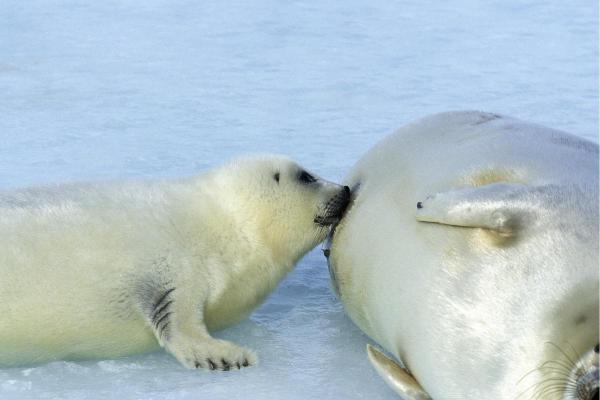
How are seals born?
Female seals often seek out sheltered places to give birth, whether in cliff caves, on drifting ice shelves or on isolated beaches. Seal labor (also known as whelping) is remarkably rapid, typically lasting between 15 and 30 minutes. This is a crucial adaptation to minimize the newborn calf's exposure to cold temperatures and potential predators.
Young seals are born at an advanced stage of development, with fully functioning eyes and a dense fetal fur called lanugo. This special hair is crucial to their survival, providing thermal insulation before they develop their subcutaneous fat layer.
The nursing period in seals is intense, but brief in most species, ranging from 4 days in the hooded seal (Cystophora cristata) to 4–6 weeks in the harbor seal. During this time, the mother's milk is extraordinarily rich in fat (up to 60% lipid content in some species), allowing the pups to gain weight rapidly. Harp seals have been documented doubling their body weight in just 12 days of nursing.
A fascinating aspect is that many seal species practice what is known as ‘lactation fasting’ where the mother does not eat for the entire nursing period, subsisting solely on her fat reserves. This extreme maternal sacrifice allows all of her energy to be focused on producing highly nutritious milk, maximizing the pup's chances of survival in a hostile environment.
Once the seal pups are weaned, they can start eating solid food and will eventually mature so they can carry out the reproductive cycle for themselves. Learn more about their diet in our article asking what do seals eat?

If you want to read similar articles to How Do Seals Reproduce?, we recommend you visit our Facts about the animal kingdom category.
- Atkinson, S. (1997). Reproductive biology of seals. Reviews of Reproduction, 2(3), 175–194.
https://doi.org/10.1530/ror.0.0020175 - Boyd, I. L., Croxall, J. P., Lunn, N. J., & Reid, K. (1995). Population demography of Antarctic fur seals: The costs of reproduction and implications for life-histories. Journal of Animal Ecology, 64(4), 505–518.
https://doi.org/10.2307/5653 - Crocker, D. E., Williams, J. D., Costa, D. P., & Le Boeuf, B. J. (2001). Maternal traits and reproductive effort in northern elephant seals. Ecology, 82(12), 3541–3555.
https://doi.org/10.1890/0012-9658(2001)082[3541:MTAREI]2.0.CO;2 - Lunn, N. J., Boyd, I. L., & Croxall, J. P. (1994). Reproductive performance of female Antarctic fur seals: The influence of age, breeding experience, environmental variation and individual quality. Journal of Animal Ecology, 63(4), 827–840.
https://doi.org/10.2307/5260


